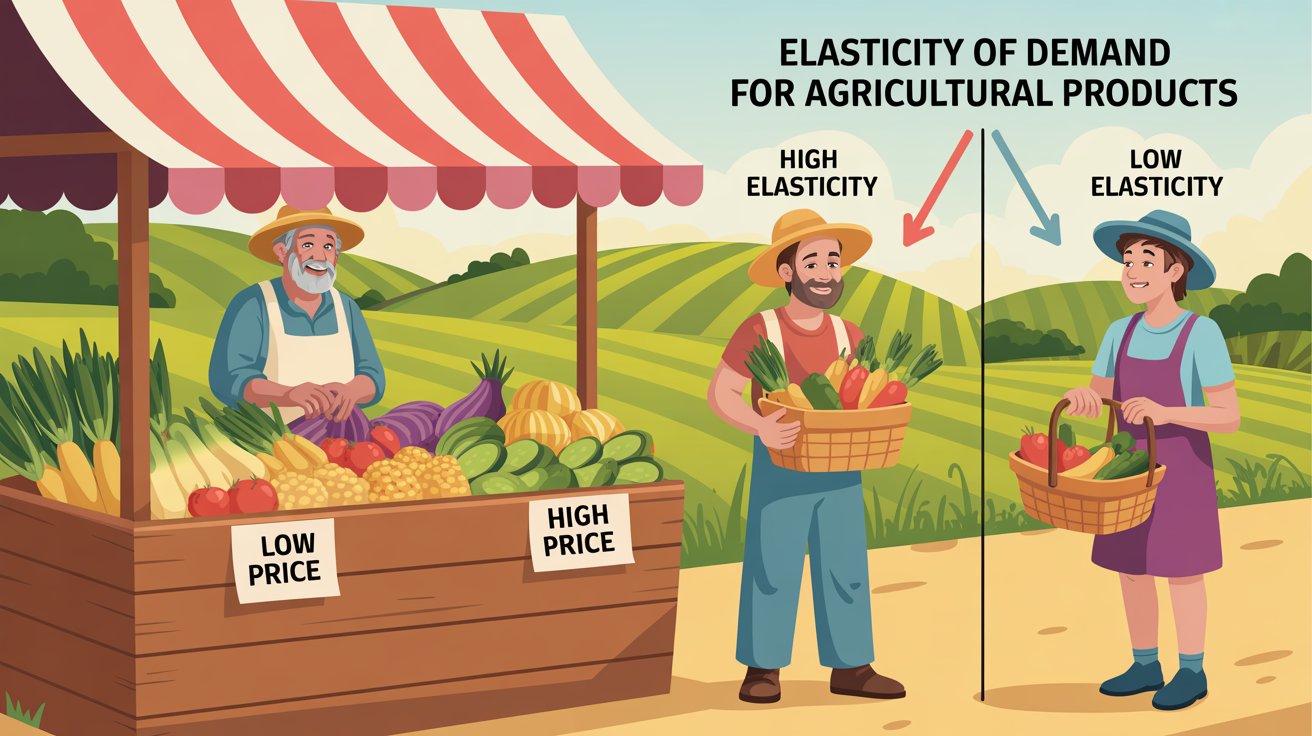Policy Considerations and Government Interventions
A. How subsidies affect the elasticity equation
If Farm subsidies shake up the typical demand elasticity patterns we see in agricultural markets. When governments step in with direct payments or price supports, they create an artificial price floor that
changes how consumers and producers respond to market signals.
Take corn subsidies in the US, for instance. They keep prices artificially low, which means consumers
become less sensitive to price changes. The demand curve flattens out because people know prices
won’t drop below a certain level. For farmers, these subsidies create a safety net that allows them to
produce more than they would in a purely market-driven environment.
The math gets interesting when you look at cross-price elasticity too. Subsidized crops become cheaper
inputs for processed foods, animal feed, and biofuels. This ripples through the supply chain, making the
demand for these end products less elastic as well.
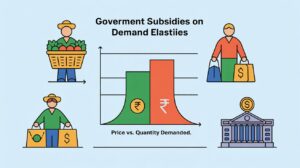
Here’s what typically happens when subsidies enter the picture
Without Subsidies With Subsidies
Price fluctuations based on supply/demand Price floors create stability Producers bear market risks Government absorbs some market risk
Higher elasticity in response to price changes Lower elasticity as price signals are muted
Market-driven production decisions Production sometimes exceeds demand
B. Price support mechanisms and their relationship to elasticity
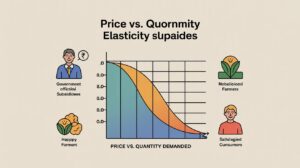
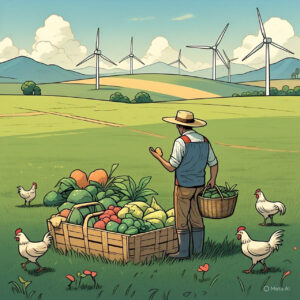
Price floors and ceilings are the bread and butter of agricultural policy worldwide. These mechanisms
fundamentally alter elasticity relationships by creating boundaries on how low or high prices can go.
Price floors, commonly used for staple crops like wheat and rice, establish minimum prices regardless of
market conditions. This directly impacts price elasticity by creating an artificial disconnect between
supply and demand. When prices hit the floor, the natural market adjustment mechanism stops working.
Quota systems add another wrinkle. By limiting how much farmers can produce, they artificially constrain
supply, shifting the elasticity equation. The EU’s former milk quota system is a perfect example – it
created a scenario where demand elasticity became less relevant because supply was predetermined.
Deficiency payments represent a more sophisticated approach. These kick in only when market prices
fall below target levels. The beauty of this system is that it allows market forces to operate within
boundaries while providing a safety net.
What’s fascinating is how these support mechanisms interact with different types of agricultural products:
For perishable goods with naturally inelastic supply (like fresh produce), price supports can
prevent catastrophic price collapses during bumper harvests
For storable commodities (grains, etc.), supports change long-term production decisions and
inventory management
For luxury agricultural products (specialty wines, organic goods), price supports may actually
reduce perceived value
C. International trade policies that respond to elasticity patterns

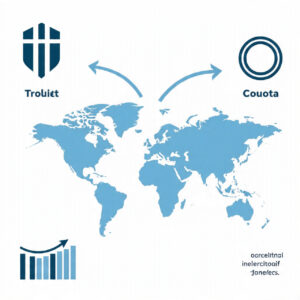
Global trade adds a whole new dimension to agricultural elasticity. Countries design import tariffs, export
subsidies, and quotas based on how elastic their domestic markets are compared to international ones.
Import tariffs on agricultural products work differently depending on elasticity. For inelastic necessities
like rice in Asian markets, tariffs protect domestic producers without drastically reducing consumption.
But for elastic luxury items like certain fruits, tariffs can dramatically shift consumption to domestic
alternatives.
Export subsidies play a fascinating game with elasticity. The EU’s Common Agricultural Policy
historically subsidized exports, essentially making European agricultural products artificially competitive
on world markets. This created a scenario where foreign consumers enjoyed lower prices while domestic
taxpayers footed the bill.
Quotas and import restrictions work as blunt instruments in the elasticity equation. When Japan restricts
rice imports, it’s explicitly manipulating the elasticity relationship to protect domestic producers, knowing
consumption won’t fall much despite higher prices.
The World Trade Organization has been pushing for agricultural trade liberalization for decades, with
mixed results. Countries resist precisely because they understand the elasticity dynamics at play
Trade Policy Import Tariffs Export Subsidies
Import Tariffs Decreases price sensitivity for imports Japan’s rice tariffs
Export Subsidies Increases foreign demand elasticity EU dairy export subsidies
Import Quotas Creates artificial inelasticity US sugar import quotas
Free Trade Agreements Gradually normalizes elasticity patterns NAFTA/USMCA agricultural provisions
D. Food security programs designed with elasticity in mind
Food security initiatives must account for elasticity realities or risk total failure. Smart policymakers
design these programs knowing exactly how consumers and producers will respond to interventions.
Public food distribution systems, like India’s massive PDS network, rely on the inelastic nature of staple
food demand. These programs work because even when subsidized rice and wheat flood the market,
overall consumption doesn’t increase dramatically – instead, households redirect spending to other
needs.
Food stamps and voucher programs in the US take a different approach. They recognize that low
income consumers have highly elastic demand for nutritious foods. By specifically subsidizing these
purchases, these programs effectively change the elasticity equation for vulnerable populations.
Buffer stocks and strategic reserves operate as elasticity management tools. By releasing stored grain
during shortage periods and purchasing during gluts, governments can smooth out price volatility that
would otherwise result from inelastic short-term supply.
School meal programs represent one of the smartest applications of elasticity principles. They create
guaranteed demand for agricultural products, effectively making a portion of the market completely
inelastic. This benefits both farmers (predictable sales) and children (nutritional security).
The most successful food security programs recognize these elasticity patterns:
For staple foods with inelastic demand, focus on accessibility and price stability
For nutritious foods with more elastic demand among poor households, targeted subsidies work
best
For products with seasonal elasticity variations, timing interventions is critical
For regions with high cross-price elasticity between foods, comprehensive approaches are needed
FAQs
Q1. What is the contribution of price supports to elasticity?
A: Price supports such as Minimum Support Prices (MSPs) can render supply and demand more inelastic by decoupling market prices from underlying supply-demand conditions.
Q2. In what ways do trade policies take into account patterns of elasticity?
A: Nations can impose export bans, quotas, or tariffs depending on the elasticity of demand or supply—trying to stabilize food prices or shield local farmers.
Q3. Do farmers’ incomes get affected by elasticity?
A: Yes. With inelastic demand, changes in prices affect revenue more. Policies that stabilize farm incomes take care of price volatility.

